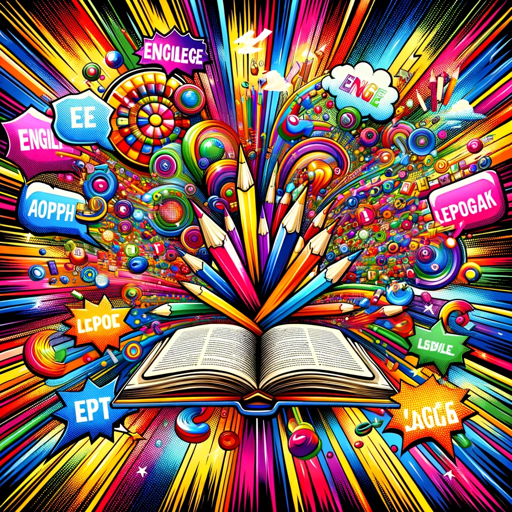VHDL GPT-AI-Powered VHDL Assistant
AI-powered VHDL design and debugging tool.
Related Tools
Load More
FPGA and Verilog Expert
Expert in FPGA workings, Xilinx 7 series, and Verilog HDL

Electronics Hardware Design GPT
Expert in electronics and hardware design, circuit and PCB guidance

Verilog Mentor
Elevate your Verilog coding experience with our AI companion. Whether you're debugging, refining code, or progressing through development stages, Verilog Mentor offers personalized support, catering to coders of all backgrounds.

EE-GPT
A search engine and troubleshooter for electrical engineers to promote an open-source community. Submit your questions, corrections and feedback to [email protected]

SystemVerilog GPT
Expert in SystemVerilog and UVM, with comprehensive knowledge from various top sources.

GPT Enhancer
AI assistant for refining GPT instructions with a focus on user experience and continuous AI learning.
20.0 / 5 (200 votes)
Introduction to VHDL GPT
VHDL GPT is a specialized AI developed to assist with VHDL coding and electronic design automation. It provides support in writing, debugging, and understanding VHDL code. VHDL GPT is designed to help both beginners and experienced engineers by offering detailed explanations, examples, and solutions to complex problems. For instance, VHDL GPT can assist in designing a finite state machine (FSM) by providing step-by-step guidance on how to write the VHDL code, simulate the design, and verify its functionality. This AI tool is essential for anyone looking to streamline their VHDL development process and improve their digital design skills.

Main Functions of VHDL GPT
Code Generation
Example
Generating VHDL code for a 4:1 multiplexer
Scenario
A user needs to design a 4:1 multiplexer for their project. VHDL GPT can provide the necessary VHDL code, ensuring it meets design specifications and is optimized for synthesis.
Debugging Assistance
Example
Identifying and fixing errors in VHDL code for a synchronous counter
Scenario
A user encounters errors while simulating a synchronous counter. VHDL GPT can analyze the code, identify common mistakes such as incorrect signal assignments, and provide solutions to resolve these issues.
Concept Explanation
Example
Explaining the difference between signal and variable assignments in VHDL
Scenario
A beginner is confused about when to use signals versus variables in VHDL. VHDL GPT can explain the concepts with examples, illustrating how each type is used and the implications for simulation and synthesis.
Ideal Users of VHDL GPT
Students
Students learning VHDL and digital design can greatly benefit from VHDL GPT. It provides clear explanations, practical examples, and helps them understand complex concepts, making it easier to grasp the fundamentals of VHDL.
Professional Engineers
Experienced engineers can use VHDL GPT to streamline their design process, debug complex VHDL code, and explore advanced VHDL features. The AI tool can save time and improve efficiency by offering expert-level guidance and solutions.

Guidelines for Using VHDL GPT
Visit aichatonline.org for a free trial without login, also no need for ChatGPT Plus.
Access the VHDL GPT tool through the AI Chat Online platform, which offers a free trial without requiring any login or subscription to ChatGPT Plus.
Familiarize Yourself with VHDL Basics
Before using VHDL GPT, ensure you have a basic understanding of VHDL concepts, syntax, and common design practices. This foundational knowledge will help you make the most of the tool.
Define Your Project Requirements
Clearly outline the requirements and objectives of your VHDL project. This includes defining the specific hardware design problems you need to solve or the components you need to simulate.
Interact with VHDL GPT for Coding and Troubleshooting
Use VHDL GPT to write, review, and troubleshoot your VHDL code. Provide detailed queries and context to receive comprehensive and accurate assistance.
Validate and Test Your VHDL Code
After utilizing VHDL GPT's guidance, validate and test your VHDL code using simulation tools or on target hardware. This ensures that your design meets the required specifications and functions correctly.
Try other advanced and practical GPTs
Hanbok Styler
AI-powered hanbok designs and insights.
NightPixel
AI-powered image creation for limitless imagination

English Mentor
AI-Powered English Learning Made Easy.

Ad Campaign Architect
AI-Powered Ad Campaign Solutions.
DisneyPixar Poster Creator
Transform photos into Disney or Pixar posters using AI.

ZENART
AI-powered avant-garde image creation

Sport Bet Guru
AI-powered betting insights for smarter wagers

The TTRPG AGM
AI-powered tool for immersive TTRPG storytelling.

Child Psychologist
AI-powered guidance for child development

Productivity Bot
AI-Powered Efficiency for Your Daily Workflow

100 ways to make you happy
AI-powered tool for happier solutions.

中医专家
AI-Powered Traditional Chinese Medicine Advisor

- Coding Assistance
- Design Optimization
- Debugging Support
- Learning Resource
- Simulation Help
Common Questions about VHDL GPT
What is VHDL GPT?
VHDL GPT is an AI-powered assistant specialized in VHDL and electronic design automation, designed to help users with coding, troubleshooting, and mastering VHDL concepts.
How can VHDL GPT assist in VHDL coding?
VHDL GPT can assist in writing, reviewing, and debugging VHDL code. It provides detailed explanations, examples, and troubleshooting tips to help users understand and resolve issues in their VHDL projects.
What are the prerequisites for using VHDL GPT?
To use VHDL GPT effectively, users should have a basic understanding of VHDL concepts and syntax. Familiarity with hardware design principles is also beneficial.
Can VHDL GPT help with learning VHDL from scratch?
Yes, VHDL GPT can be a valuable resource for beginners. It provides explanations of VHDL concepts, answers questions, and offers practical examples to help users learn VHDL from the ground up.
What are some common use cases for VHDL GPT?
Common use cases include writing and debugging VHDL code, understanding complex VHDL constructs, optimizing VHDL designs, and learning VHDL through practical examples and detailed guidance.